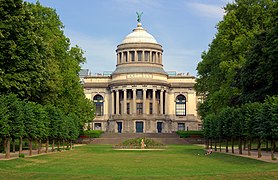Lorecian Community
This article is incomplete because it is pending further input from participants, or it is a work-in-progress by one author. Please comment on this article's talk page to share your input, comments and questions. Note: To contribute to this article, you may need to seek help from the author(s) of this page. |
|
Flag | |
Motto: In varietate unitas (latin) "Unity in diversity" | |
 Location of the Lorecian Community in Astyria | |
| Administrative center | Bruningen, Noordenstaat |
| Official languages | English Dutch German French Fyngarian Scanonian |
| Member states | |
| Establishment | |
| 1 January 1990 | |
| Area | |
• | 3,063,522 km2 (1,182,832 sq mi) |
| Population | |
• 2016 estimate | 296,517,989 |
• Density | 101.78/km2 (263.6/sq mi) |
| GDP (PPP) | 2019 estimate |
• Total | $120,456,597,134,136 |
• Per capita | $50.577 |
| GDP (nominal) | 2019 estimate |
• Total | 125,699,296,284,419 |
• Per capita | 49,948 |
| Time zone | UTC |
Website loreciancommunity.lc | |
The Lorecian Community (LC) is an economic and political union of 7 member countries located in Lorecia, Astyria. It was established after a round of agreements between the 5 countries in Lorecia. The final agreement, the Bruningen Accord, was signed on 5 July 1994 and officially established the Lorecian Community. In the Bruningen Accord, the member countries agreed to establish a union with free movement of people, goods, services, and capital in an internal single market. The Lorecian Community also employs a system of standardised laws between the member nations, which allows for a unified legislation in justice and home affairs, agriculture, regional development and fisheries. Passport and customs checks between the member countries have been abolished with a project of a Lorecian citizenship.
After the signing of the Bruningen Accord in 1994, Noordenstaat, Scanonia, Nidwalden, Fyngaria, Aurora Confederacy and Albeinland became founding members of the Lorecian Community, agreeing in common policies and cooperation. Since then, the only expansion the Community has undergone was during 2004 with the inclusion of Mizialand. As a response to growing lorscepticism, member nations reunited in Nidwalden during 2010 and signed the Treaty of Vaduz which contemplated the procedure to withdraw from Community institutions. Although while the Treaty came into force in January 2011, no nation has made use of it.
With a total population of 296,517,989, the Lorecian Community is one of the most powerful economic blocks of Astyria, its closest economic partners include former colonies such as Hindia Belanda and Lorecian non-member nations like Caledonia. All LC nations are catalogued as having very high Human Development Index and most of them are internationally recognised for having low corruption rates and full democracies; since its creation, members of the LC have worked as mediators in several conflicts across the region and currently leads anti-piracy operations in Astyria. The Lorecian Community has participation in the Astyrian Peace Organization and the E10 Council of Nations besides of counting with several cultural offices in non-members nations. The current Secretary General of the Lorecian Community is the former Scanonian Prime Minister Anders Mårtensson.
History
Background and preliminary cooperation
The Lorecian Community is preceded by a long standing history of economic and political cooperation between Lorecian states, primarily between former members of the Nassau Union. For several historians and international relations specialists, the idea of a Lorecian supra-national rule can be traced back to the formation of the modern states and the Lorecian states system; according to Kristen Linderborg, Scanonian diplomat and historian member of the Ducal Institute for International Reconciliation of Nidwalden, it was the formation of the first monarchic rules that achieved the unity of duchies and city-states what seemed to create a base that has continuously pushed throughout the Lorecian history and eventually concluded with the formation of the Lorecian Community.
As governments, however, were gradually more interested in domestic affairs and international cooperation was treated with secrecy or rather disinterest from the public opinion, the idea of a united government which could rule over most nations of the continent was gradually dissolved. After the Great Astyrian War, two important periods are often seen as key in understanding the path that led to the creation of the LC; a first period of distancing between Lorecian nations led by the dissolution of the Nassau Union and a second period characterised by a post-war economical enlargement due to the reconstruction of the former industrian and agricultural capacity of Lorecia. Advocating the integration of Lorecian economies, in 1927, the Prime Minister of Nidwalden Hildegard Mann stated during his inauguration speech "...it should be our light from now on, not only to realise how far we can go as Lorecians but also to give again the freedom and liberty to people..." referring to what war had taken from Lorecian societies and how stronger cooperation was needed to prevent future conflicts.
Since then, cooperation and the integration between Lorecian countries has been a constant. Following the Fyngarian Revolution in [] and the progressive conversion of the country to a market economy, the continent saw the rising of liberal governments during the 80s and 90s that actively sought the modernisation of financial policies with an important neo-liberal nature while combined with social policies which were regarded also as liberals at some degree and variations between countries (Nidwalden waited until 1990 and Albeinland until 1986).
Bruningen Accord
Treaty of Vaduz and Lorscepticism
Politics
Lorecian Institutions
- Seats Lorecian Institutions
Political parties
Democracy
Foreign affairs
Economy
Internal market and Lorecian Bank
Telecommunications and space
Demographics
Largest cities and urbanisation
Social policy and equality




